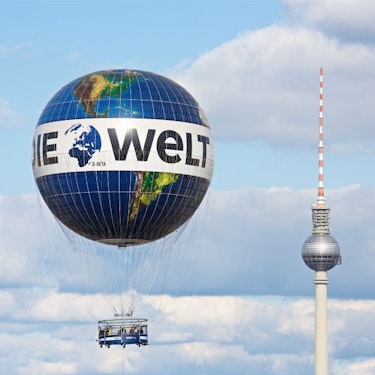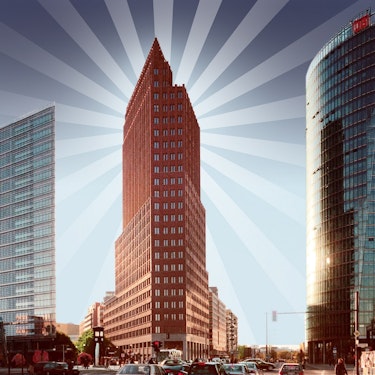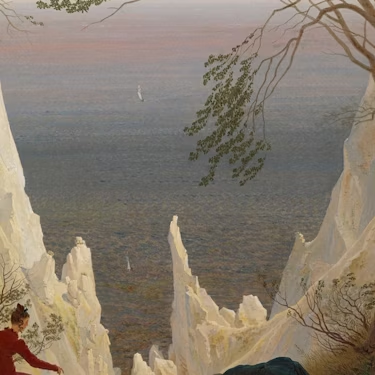More about: 10 Things to Do in Berlin in the Winter
Germany's capital, used to the harsh conditions of its winters, is unimpressed by the low temperatures. Quite the opposite is true, and in addition to all there is to see and do in Berlin during the rest of the year, there are a number of things to do that will ensure an unforgettable stay.
During this time of year you can join the Berliners skating on one of its most emblematic squares or on the lakes that surround the city, go to the impressive Christmas markets, witness the arrival of the world's biggest film stars or escape the cold by visiting some of the best museums in Europe.
1. Enjoy the view from Panoramapunkt

You may be looking for a vantage point from which to look out over the city, especially if it has snowed and you want to see how the white blanket transforms the landscape. A great option is the Panoramapunkt, located at the top of the Kollhoff Tower, in the middle of Potsdamer Platz. The fastest lift on the continent is used to go up, capable of travelling the 100 metres up the tower in just 20 seconds.
In addition to the space for contemplating the views, you will also find a cafeteria and a room where you can see the very interesting multimedia exhibition Berliner Blicke, which reviews the history of the area.
The best thing about the Panoramapunkt is the 360-degree panoramic view it offers of the entire city, but the aesthetics of the space itself are also very striking. It has tried to recreate the atmosphere of the 1920s and 1930s, with clear references to the work of Fritz Lang.
2. Take a stroll through the Hanukkah market in Berlin
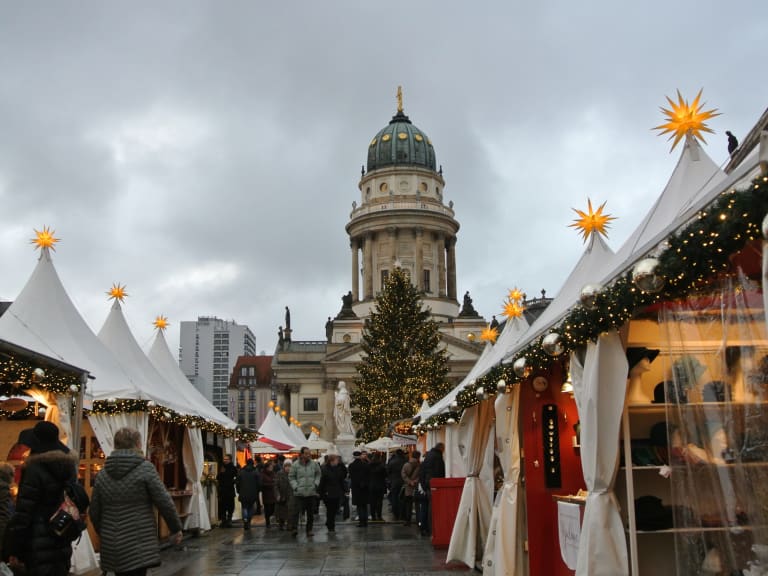
Although the Jewish religion does not celebrate Christmas, there is a religious holiday in the Jewish quarter in December: Hanukkah. In Berlin, for a whole month, the city's Jewish museum sets up a market for this celebration. I recommend you to go there if you want to get to know another way of living these dates and take the opportunity to take a tour of the Jewish quarter.
In this market you will find many interesting things:
- Culinary specialities that Jews eat to celebrate Hanukkah.
- Traditional Israeli dishes such as date paste and candied fruit.
- Typical Hebrew items, such as Hanukkah lamps, mezuzah (a container with a rolled-up scroll with Torah verses inside), dreidels (four-sided dice used in a traditional Hanukkah game) or various types of cosmetics made from Dead Sea salts.
- Traditional Jewish music concerts, with songs sung in Yiddish, are usually held on Sunday afternoons.
Admission to the market, located in the courtyard of the Jewish Museum, is free and the market is open from 12:00 to 18:00.
3. Use bus line 100 to get around the city
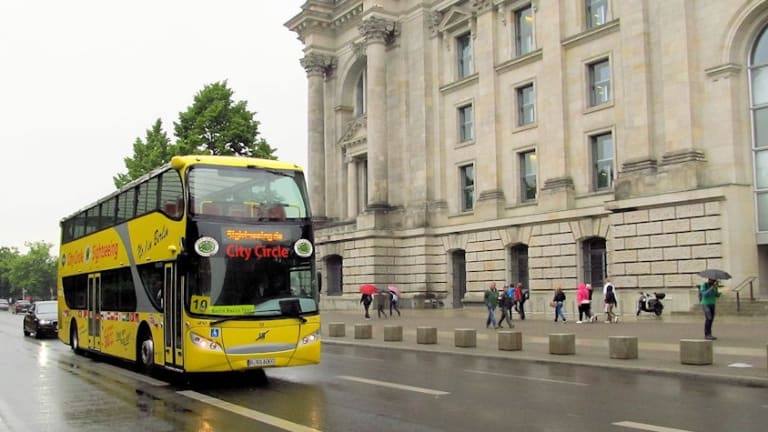
With Berlin's cold winter temperatures, you probably don't feel like spending too much time outdoors. Luckily, the German capital offers you plenty of options to get around its streets in a more comfortable way. One of them, and possibly the easiest, is to use the emblematic bus line 100.
This line, apart from its usefulness, is a symbol for the city, as it was the first to make a route between the west and east zones after reunification. It runs from Zoologischer Garten station to Alexanderplatz square.
If you don't know the city, these names may not mean anything to you, but suffice to say that the route passes through **Berlin'**s main sights. If you buy the Berlin WelcomeCard you can create your own sightseeing itinerary at the price of the city's city buses.
Another great option: the sightseeing buses
Of course, if you prefer the itinerary to be accompanied by explanations of what you are seeing, you can always buy a ticket for one of the Berlin sightseeing buses.
With this means of transport you can hop on and off as many times as you like and visit places such as the Brandenburg Gate, Checkpoint Charlie or the Holocaust Memorial, among many others.
4. Spend a few hours sheltered on Museum Island.

Although they're a must-see at any time of year, there's no better time to visit the Museum Island than in winter. Not only will you be able to enjoy the art on display, but you'll also spend a few hours under a warm roof.
The Museum Island is located right next to the cathedral. In this article about the entrance tickets you will find all the information you need to visit all the museums there:
- Neues Museum: without a doubt, what attracts most of the attention is the bust of Nefertiti.
- Alte Nationalgalerie: it houses paintings by German painters such as Max Lieberman and Karl Friedrich Schinkel.
- Bode Museum: its sculpture collection is truly impressive, with works by artists such as Donatello, Bernini and Canova.
- Altes Museum: it was the first museum opened on the island. Today it houses an important collection of classical art.
If you are still hungry for more of this kind of visits, in this article you will find a list of the best museums in Berlin for you to plan your visit.
5. Dare to skate on icy lakes

The lakes that surround Berlin are a year-round attraction for many Berliners on their days off. In summer they come to bathe in the water and, when it freezes over in winter, to skate on it. If you like this activity, you should join the locals and go to one of them:
- Lake Wannsee, located southwest of the capital, its large frozen area of almost 200 hectares makes it one of the best destinations for winter sports enthusiasts.
- Lake Grunewald, which is set up during the winter season for skaters or for those who want to go sledging.
The best thing about these lakes is that they are easily accessible from the centre of Berlin. You only need to take the city 's metro to reach them in a short time.
How to get there
- Lake Wannsee: if you take Alexanderplatz as a reference point in Berlin, you can reach the lake by taking the RE1 train line or the S7 underground line.
- Grunewald Lake: from the same point, take the S31 line.
6. Be sure to visit Winterwelt (Winter World)
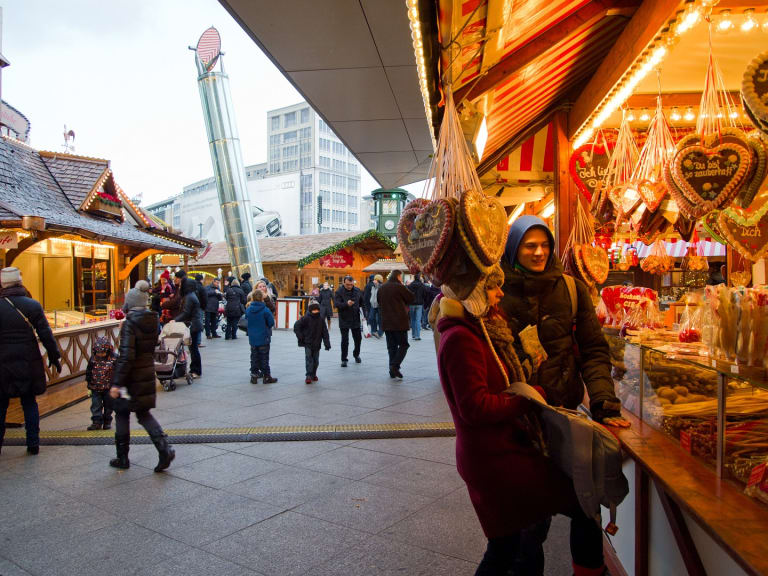
If there is one event that Berliners can't miss in winter, it's Winterwelt, the Winter World. For a whole month, until the beginning of January, a real winter landscape is set up among the skyscrapers surrounding Potsdamer Platz, one of Berlin's most famous squares.
This is, without doubt, a great place to go if you've been to Berlin with children, although adults will also have a great time making use of the facilities, as those who come to this square, and you should be one of them, have the chance to enjoy several different attractions:
- Skating on an ice rink.
- Slide down a 70-metre-long slide.
- Play eisstock.
- Sledding on a 12-metre high track.
- Recharge your batteries at one of the food stalls set up in the square, such as the hut offering Austrian specialities, which will make you feel as if you were in the Alps.
- Enjoy the Christmas music concerts and some of the DJs who entertain you during your stay.
Practical information
- Opening hours: between 10:00 and 22:00, every day of the week. On Christmas Eve they close at 2pm.
- Price: Admission is free, although the toboggan run costs €1.5.
Sledging rink €1,50.
7. Experience Berlin's winter nights in its most atmospheric entertainment venues

Berlin's reputation for nightlife is well deserved, with venues for all kinds of people. And there's a different kind of nightlife whether you're in the city in summer or winter. In the former case, the terraces and open-air parties are the most popular, while in winter nothing can compete with the indoor pubs and clubs. If you want to experience the nightlife in the German capital, here are some places to go:
- Kreuzberg district: considered one of the most alternative areas of the city, this neighbourhood in the east of Berlin is home to a large number of venues of all kinds.
- Friedrichshain: this neighbourhood, separated from the previous one by the river, also has interesting places if you like dancing. Blau|url=https://www.katerblau.de/::::, with a very successful punk aesthetic.
- Prenzlauer Berg: if you prefer to go to quieter places, Prenzlauer Berg is the place for you.
8. Try to catch a star at the Berlin International Film Festival

The Berlin International Film Festival, known as the Berlinale, is one of the biggest film festivals in the world, along with Venice, Cannes and San Sebastian. Those of you who are in the city during the festival in February will have the chance to meet some of the stars attending the event or to see one of the films in competition.
The festival has its headquarters in the Berlinale Palast, although various cinemas in the city take advantage of the occasion to hold their own activities. If you feel like it, you can go to the catwalk where the famous red carpet is laid out and watch the parade of actors and actresses who attend the premieres.
Those who want to go further and attend a screening as an audience don't have it easy, as tickets sell out quickly. The only way is to go to the box office very early in the morning and have a bit of luck.
9. The best way to beat the cold: saunas and spas

Although somewhat less so than the inhabitants of the Nordic countries, there is a great love of saunas and spas in Germany. It's one of the best ways to combat the cold outside and can be a great way to spend a few hours if you've travelled to Berlin in winter.
In the German capital you'll find various types of establishments. Traditional saunas and spas are joined by many Turkish baths, possibly due to the large-scale immigration from the Ottoman country to Germany several decades ago.
Saunas are generally mixed, and most of them are swimsuit-free. If you are shy, check the conditions before booking.
- Grand Hyatt Potsdamer Platz: Many describe this establishment as an oasis of luxury in the heart of the city.
as an oasis of luxury in the city centre. Its heated swimming pool is surrounded by large windows offering wonderful views of the city, a Finnish-style sauna, a Turkish bath and a gym.
- Türkisches Hamam Berlin: As the name suggests, this establishment offers the experience of an authentic Turkish bath in the heart of Berlin. It is located at Bülowstraße 57
- Stadtbad Neukölln: at Ganghoferstraße 3 in the Neukölln district, this luxurious spa opened in 1914, no less. At the end of your treatment you have the option of using the ice pool.
10. Have fun at the Christmas Markets

Without a doubt, the star plan in winter, especially if you've been to Berlin at Christmas time, is to visit the markets located in the city's squares. Be sure to visit several of them, enjoy the attractions and eat and drink what they have to offer.
One of the biggest and most popular in the capital is the one located on Alexanderplatz:
- In the area there are attractions that will delight young and old alike, starting with the huge Ferris wheel from which you can see a large part of the city.
- You can also skate on an ice rink.
- The beautiful decorations and the huge Christmas tree are a beautiful visual experience.
- There is no shortage of craft stalls and stalls offering food and drink.
Other interesting Christmas markets include the beautiful Gendarmenmarkt and Charlottenburg, although a trip to Potsdam (just 30 kilometres away) is also highly recommended to enjoy the beautiful market there.
Don't leave without tasting the glühwein
Glühwein, mulled wine, is the king of the Christmas markets, although you'll find it in many places throughout the winter. No one should leave Berlin without trying it, both for its delicious taste and for the pleasant warm feeling it gives you as soon as you start drinking it.
What the weather is like in Berlin in winter

There is really only one word to describe the weather in Berlin in winter: cold. The average highs are a meagre 3°C, while the average lows are around minus 2°C, although very often the thermometer drops much lower.
The only good news, although I recommend you check the forecast before you travel, is that these are not overly rainy months. However, when there is precipitation, it is not unusual for it to be in the form of snow.
On the other hand, you should bear in mind when planning your visits that night falls very early. In January, for example, the sun sets around 16:30.
What to wear in Berlin in winter

A popular saying in Berlin is "no bad weather, bad clothes". This may well be true, but those who are not used to these low temperatures will need a little extra help.
Your suitcase should be packed with thermal underwear, including something for your legs and feet. Boots are the best footwear, especially those that are lined on the inside. It is also important that they have non-slip soles in case it snows.
A good warm hat is also essential, as well as a good scarf and gloves. Of course, don't forget your best jacket and a mackintosh just in case.

